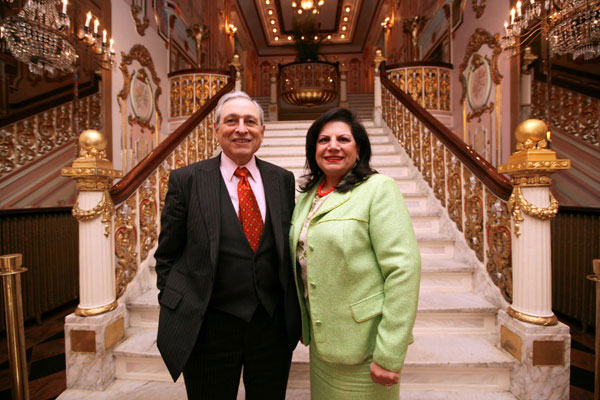They want to keep the dream alive.
A pair of Brooklyn teens are leading the charge to save the historic Grand Prospect Hall, as its new owner races to demolish it.
Solya Spiegel, 16, and Toby Pannone, 18, are spearheading the grassroots campaign to landmark the Victorian dance hall, launching an online petition and putting in a formal request for the Landmarks Preservation Commission to review the premises before the wrecking balls swing.
“Why would we give this away?” said Spiegel. “This is such an amazing part of Brooklyn, it’s incredible.”
The ballroom on Prospect Avenue near Fifth Avenue was listed on the National Register of Historic Places in 1999, but is not landmarked, meaning it can potentially be demolished. Developer Angelo Rigas purchased the building from the Halkias family in a multi-property $22 million deal in July of this year, and almost immediately filed yet-to-be-approved demolition permits, as Brooklyn Paper first reported. Rigas could not be reached for comment.
The National Register describes the hall, first built in 1892 and rebuilt in 1903, as the best example of a Victorian ballroom that exists in the country. After a fire in 1900, it reopened in its current form, redesigned by architect Ulrich J Huberty, a prominent architect who also designed the landmarked Prospect Park Boathouse and Tennis House. The hall is also home to one of Brooklyn’s earliest elevators, which was installed when the building was built and still operational when the wedding venue closed for business at the start of the pandemic.
“In addition to its significance as an outstanding specimen of its architectural type and period, Prospect Hall is an important example of the large ethnic social/cultural/entertainment facility, a building type that existed in large urban immigrant neighborhoods nationwide at the turn of the 20th century,” read National Historic Register documents on the hall.
The venue lay dormant for many years of the 20th Century before being purchased by the Halkias family in 1981, who restored the property and became local celebrities thanks to their constantly-airing low-budget commercials with the “we make your dreams come true!” tagline.

Spiegel and Pannone have a personal affinity towards the historic hall, similar to ones forged by thousands of Brooklynites over the years, whether through attending weddings at the hall, attending a concert there, or just seeing their commercials on local television.
Spiegel’s connection to Grand Prospect Hall was formed through Goldenfest, a yearly brass music festival that transforms the sprawling venue into a bumping Balkan hoedown. Spiegel, a Kensington resident, ended up playing violin in the kids’ band at the fest after attending with her family for years.
“It’s super important for me,” she said. “I go every day that I can when it happens. I spend hours and hours there just hanging out with my friends, it’s such an important place to me.”
While the full demolition permits are yet to be granted by the Department of Buildings, interior demolition permits have been granted, giving construction crews the go-ahead to take a sledgehammer to the interior of the historic hall. On a recent visit, Brooklyn Paper saw from the street level historical features such as the ceiling still intact, with a number of dumpsters lined up outside the building waiting to be filled. Construction workers could be seen milling around the site.
A partial stop-work order was also issued by the city regarding the Polish American WWII Veterans memorial in the Eastern courtyard of the building, stating that no work can be done on the memorial. The shrine is a relic of the property’s previous owners, a Polish-American organization that lost the hall in foreclosure, clearing the way for the Halkias’ to purchase it.
Meanwhile, Spiegel and Pannone have made a formal request with the LPC for review, and if the commission calendars the Grand Prospect Hall for consideration of landmark status, it will be spared demolition at least until a ruling is made.
“I think it’s something to be considered,” Pannone said. “It’s the best example of a Victorian ballroom in the country, demolishing it would be a total loss.”

























